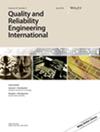安全关键型多任务情况下的人机系统风险评估
IF 2.8
3区 工程技术
Q3 ENGINEERING, INDUSTRIAL
引用次数: 0
摘要
在高度复杂和对安全至关重要的系统中,特别是在异常情况下,多任务处理越来越普遍。心理超负荷(MOL)可能会发生,并导致遗忘/误解任务的不确定性。这种概率错误可能会造成灾难性后果,并极大地增加人机系统的多任务风险。为了更好地识别安全关键型多任务情况下的风险,本文对 MOL 机制进行了研究,并提出了一种考虑 MOL 的风险分析方法。当多重资源模型估计的资源需求超过操作员的能力时,就会发生 MOL。这时,操作员的绩效会下降,往往会出错或放弃部分任务。基于 MOL 机制,我们提出了一个 MOL 性能依赖(MOL-PDEP)门,将 MOL 纳入风险分析。它的输入是并发任务,一旦发生 MOL,就会以一定的概率触发相关的危险人类行为事件。通过该门,传统的故障树(FT)中增加了这些事件之间的依赖关系及其与 MOL 的非确定原因关系,这给 FT 分析带来了挑战。本文提出了一种隐式方法来分析带有 MOL-PDEP 门的故障树并计算事故概率。直升机坠毁事故案例研究证明了所提方法的有效性。本文章由计算机程序翻译,如有差异,请以英文原文为准。
Risk assessment of man‐machine systems under safety‐critical multitasking situations
Multitasking is increasingly common in highly complex and safety‐critical systems, especially under abnormal situations. Mental overload (MOL) may occur and result in forgetting/mistaking tasks uncertainly. Such probabilistic errors could have catastrophic consequences and contribute greatly to the multitasking risk of man‐machine systems. In this paper, to better identify the risks of safety‐critical multitasking situations, MOL mechanism is investigated and a risk analysis method considering MOL is proposed. MOL occurs when the demand for resources estimated by Multiple Resources Model exceeds an operator's ability. Then, the operator's performance degrades, and s/he tends to mistake or abandon parts of tasks. Based on the MOL mechanism, a MOL‐performance dependency (MOL‐PDEP) gate is proposed to incorporate MOL into risk analysis. Its inputs are concurrent tasks, and it triggers the related hazardous human behavior events with certain probabilities if MOL occurs. Through this gate, the dependence among these events and their nondeterministic cause relationships to MOL are added to traditional fault tree (FT), which presents a challenge issue to FT analysis. An implicit method is proposed to analyze the FT with MOL‐PDEP gate and calculate the accident probability. A case study on a helicopter crash accident demonstrates the effectiveness of the proposed method.
求助全文
通过发布文献求助,成功后即可免费获取论文全文。
去求助
来源期刊
CiteScore
4.90
自引率
21.70%
发文量
181
审稿时长
6 months
期刊介绍:
Quality and Reliability Engineering International is a journal devoted to practical engineering aspects of quality and reliability. A refereed technical journal published eight times per year, it covers the development and practical application of existing theoretical methods, research and industrial practices. Articles in the journal will be concerned with case studies, tutorial-type reviews and also with applications of new or well-known theory to the solution of actual quality and reliability problems in engineering.
Papers describing the use of mathematical and statistical tools to solve real life industrial problems are encouraged, provided that the emphasis is placed on practical applications and demonstrated case studies.
The scope of the journal is intended to include components, physics of failure, equipment and systems from the fields of electronic, electrical, mechanical and systems engineering. The areas of communications, aerospace, automotive, railways, shipboard equipment, control engineering and consumer products are all covered by the journal.
Quality and reliability of hardware as well as software are covered. Papers on software engineering and its impact on product quality and reliability are encouraged. The journal will also cover the management of quality and reliability in the engineering industry.
Special issues on a variety of key topics are published every year and contribute to the enhancement of Quality and Reliability Engineering International as a major reference in its field.

 求助内容:
求助内容: 应助结果提醒方式:
应助结果提醒方式:


